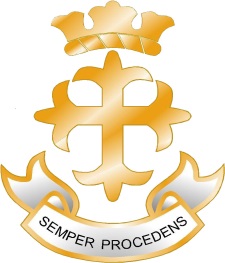The Covid-19 Catch-Up Funds have been fundamental in helping schools decrease the attainment gap between students and helping disadvantaged students catch up with their peers. This article by Lee Raftery, Deputy Headteacher of the Royal Liberty School, looks at some of the interventions the school has offered since the catch-up was introduced and the impacts of these interventions.

Like all schools, the catch-up funding we have received this year has been fundamental in allowing us to provide extra provision and support to identified students.
Students were identified for the first wave of catch-up through a number of factors, including disadvantage, those who struggled to engage in online learning and those with lower literacy and numeracy levels.
In the second wave of catch up (2021-2022) we used data from early assessments in the Autumn term to identify students in need of support. We looked at students who were underachieving across the whole curriculum and specifically in English, maths and science.
This article is going to look at some of the interventions we offer and reference some of the impact these have had over the course of this academic year to date. It is important to note that improvements and progress can not be solely attributed to the additional interventions, as there are many other factors that impact progress. It is also difficult to judge the impact of these interventions in the middle of the academic year, with limited comparative data.

Examples and Results of some of our Interventions
- We have utilised the National Tutoring Online tuition for selected students in English, maths, science and geography. Each student has had or is in the process of having 15 hours of tuition, generally in groups of three. The results of these show students are making progress because of these interventions. The impact is shown in year 11 by comparing attainment in the mock exams (December) to the second set of mock exams in (March). Results showed that 57% of students improved by one grade or more in this short space of time, with an overall improvement of 74% seen when comparing sub-levels of progress. Other improvements of a grade or more are shown in the following subjects: Geography 67%, Spanish 33%, Maths 50%. It is worth noting that some of these students are still in the process of completing their 15 hours of tuition.
- National Tutoring Programme – We signed up for the academic mentor scheme and were assigned a maths mentor. This is a full-time member of staff who has a full timetable, working with approximately 5 students in each year group. These students receive between 6-9 hours of small group maths tuition a fortnight. In each year group, the students we have targeted have been different, for example in year 11 the mentor has worked with students who are on the 4/5 boundary, who before COVID would not have been in this group. Data shows that 40% of the students in the year 11 mentoring group have made a grade or more progress between the assessment points and 50% of the year 8 students in the group have made more than a grades progress.
- In addition to using external providers, we also utilised our own teaching staff and have introduced a compulsory period 6 lesson for year 10 and 11 students. This has provided additional time to focus on content, along with addressing gaps in students’ learning. The impact of this is across the whole curriculum and allows content to be re-covered along with addressing specific areas of weakness. We can see that students are making progress, showing the success of these interventions across the curriculum.
- Science tuition delivered by our own staff – we offer Science tuition 4 nights a week, with a year group (7-10) having a night each. These are small group sessions and the tutor is given specific things to focus on within the sessions to ensure the gaps are addressed and that they continue to make progress. Analysis shows 67% of the students who have received this intervention have made one or more grades progress between the assessment periods.
- Conference days – An intervention which has really boosted students’ confidence for the English and maths exams has been our intense English and maths drop-down days. We split the year group in half based on current performance. Students who were a grade 5 and above, spent a drop-down day split between English and maths, while the other half of the year focused on independent study/controlled assessments. This was then switched around on another day so all students received this intervention. This was conducted after the first set of mock exams, focusing on gaps in knowledge and then again after the second set of mock exams. On each of the days, the students had 2.5 half hours of maths and 2.5 hours of English. Those who were secure in achieving a top grade in one of these subjects were provided with Science tuition.
- History sessions – The Head of History took a small group of students for intervention two hours a week, during the timetabled day, this focused on specific gaps and reviewing Personalised Learning Checklists. From this intervention 80% of the students improved by a grade between the sets of mock exams.
- We have also been able to provide lots of Literacy and Numeracy support for our year 7 and 8 students which has helped to boost their confidence. It allows small group support, focused on specific weaknesses and occurs during the timetabled lessons.

Monitoring Disadvantaged Student Attendance of Interventions
Although we have not funded this through Catch Up – it is important to note that we have an Assistant Headteacher who has the responsibility for the progress and attendance of disadvantaged students. He has worked on ensuring the correct students are prioritised for interventions and has also put initiatives and incentives in place to increase the attendance of the disadvantaged students, to reduce the attendance gap. If students are going to improve and make progress, tuition and Quality First Teaching are essential, however, if they have low attendance, all of the other efforts are wasted. The Assistant Headteacher met with all disadvantaged students who were in or near persistent absence and set them additional targets. The initiatives that were put in place were effective and in a short period of time, students were given SMART targets specifically to do with their attendance and punctuality.
- 63% have improved their attendance when compared to the Autumn term
- 26% have improved attendance but are still within the PA category
- 37% have improved attendance to the point that they are no longer classed as PA
Feedback from students on the intervention they received:
Maths dramatically impacted my grade, English as well, both have made a big difference to my confidence in these subjects
– Year 11 student
It worked well, the sessions are in small groups, so you get good 1-1 or 2-1 hour of revision with an experienced tutor
Year 11 student, NTP
I am finding it really helpful. Really good, really nice, tutors who are very patient
Year 10 student, NTP
Register FREE to access 2 more articles
We hope you’ve enjoyed your first article on GE Insights. To access 2 more articles for free, register now to join the Government Events community.
(Use discount code CPWR50)




